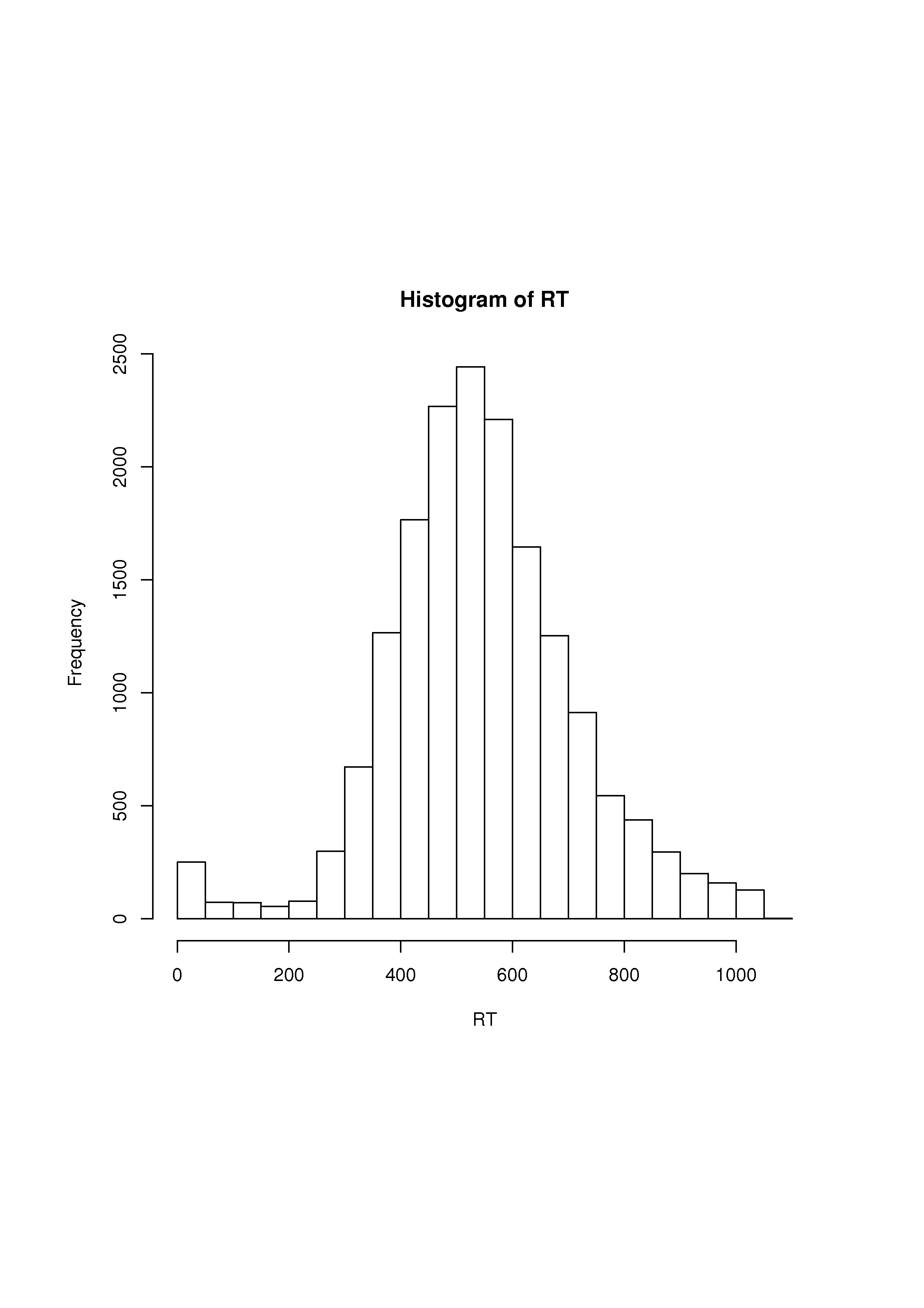Tutorial on using Mixed Models ANOVA in R
Sample data
Here is the header and first 10 lines of data from the file cleaned_small_1.csv. (The names of the variables will be read from the header line and have been shortened to a maximum of 7 characters just for legibility here.)
Subject Session Respons RT Trial Item Accur Task Freq N LexStat b 2 4 639 2 earn correct S H L W b 2 5 596 3 suif correct S L P b 2 5 407 4 nomad error S L L W b 2 4 432 5 monk correct S L L W b 2 4 509 6 gentle correct S H H W b 2 5 699 7 lafe correct S H P b 2 5 990 8 tase correct S H P b 2 4 430 9 animal correct S H L W b 2 5 705 10 swinch correct S H P b 2 4 566 11 lesson correct S H H W ...
Here's the structure:
Subject: 15 subjects.
Session: 2,3,5,6. The experiment contains four sessions.
- Session 2 and 3 are normal lexical decision task in which participants are told to distinguish between words and pseudowords.
- Session 5 and 6 are lexical decision with a deadline in which participants are told to make a very quick response (before 460ms).
Respons: which button they pressed. Participants are instructed to press right button when they see words and press the left button when they see pseudowords.
- 4=right hand
- 5=left hand.
Trial: order of stimuli presentation in each session
Item: words or pseudowords presented to participants
Accur: correct responses or errors
Task:
- S=normal lexical decision
- D=lexical decision with a deadline
Frequency:
- H=high frequency words
- L=low frequency words
- Pseudowords don't have this parameter.
N:
- L=low neighbourhood size
- H=high neighbourhood size.
LexStat:
- W=words
- P=pseudowords.
Importing the data
datafile <- "~/mixed_models_in_R/cleaned_small_1.csv" sampledata <- read.table(datafile, head=T, row.names=NULL, sep=",") # sampledata is a 'table', one of the basic R data structures. names(sampledata) # the list of variables in data sampledata$session <- as.factor(sampledata$Session) # session was interpreted as a numeric variable but we want to # treat it as a factor - checked by is.factor(sampledata$session) evaluating as FALSE sampledata$RT <- as.numeric(sampledata$RT) # RT was interpreted as a factor because there is a 'space' lurking # somewhere as one of its values - checked by in.numeric(RT) evaluating as FALSE
attach(sampledata) # this means we can reference variables directly # e.g. Subject rather than sampledata$Subject
Simple data checking
hist(RT)
produces this histogram which was saved as a png graphics file 
